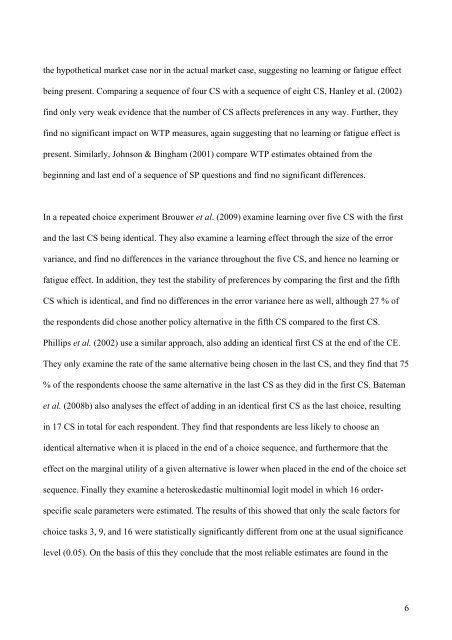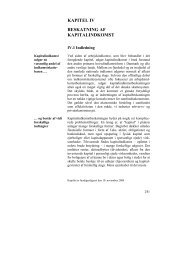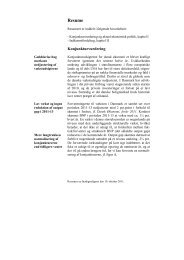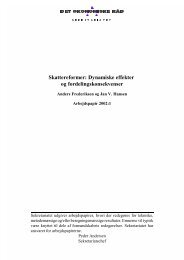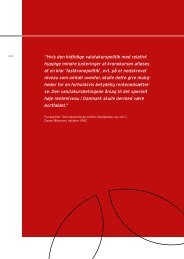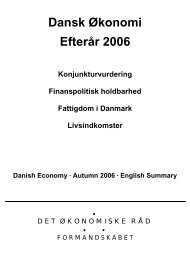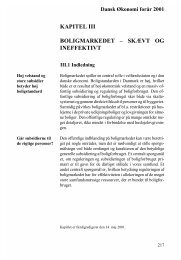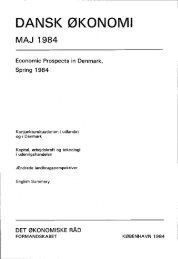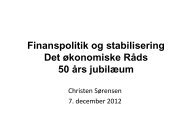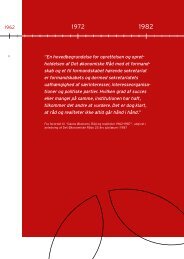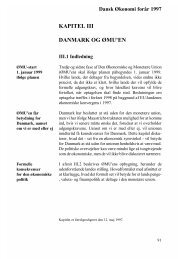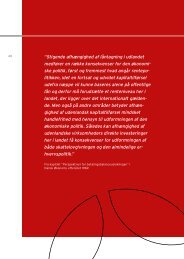The Effect of Learning and Fatigue on Preferences and WTP in a ...
The Effect of Learning and Fatigue on Preferences and WTP in a ...
The Effect of Learning and Fatigue on Preferences and WTP in a ...
Create successful ePaper yourself
Turn your PDF publications into a flip-book with our unique Google optimized e-Paper software.
the hypothetical market case nor <strong>in</strong> the actual market case, suggest<strong>in</strong>g no learn<strong>in</strong>g or fatigue effect<br />
be<strong>in</strong>g present. Compar<strong>in</strong>g a sequence <str<strong>on</strong>g>of</str<strong>on</strong>g> four CS with a sequence <str<strong>on</strong>g>of</str<strong>on</strong>g> eight CS, Hanley et al. (2002)<br />
f<strong>in</strong>d <strong>on</strong>ly very weak evidence that the number <str<strong>on</strong>g>of</str<strong>on</strong>g> CS affects preferences <strong>in</strong> any way. Further, they<br />
f<strong>in</strong>d no significant impact <strong>on</strong> <strong>WTP</strong> measures, aga<strong>in</strong> suggest<strong>in</strong>g that no learn<strong>in</strong>g or fatigue effect is<br />
present. Similarly, Johns<strong>on</strong> & B<strong>in</strong>gham (2001) compare <strong>WTP</strong> estimates obta<strong>in</strong>ed from the<br />
beg<strong>in</strong>n<strong>in</strong>g <str<strong>on</strong>g>and</str<strong>on</strong>g> last end <str<strong>on</strong>g>of</str<strong>on</strong>g> a sequence <str<strong>on</strong>g>of</str<strong>on</strong>g> SP questi<strong>on</strong>s <str<strong>on</strong>g>and</str<strong>on</strong>g> f<strong>in</strong>d no significant differences.<br />
In a repeated choice experiment Brouwer et al. (2009) exam<strong>in</strong>e learn<strong>in</strong>g over five CS with the first<br />
<str<strong>on</strong>g>and</str<strong>on</strong>g> the last CS be<strong>in</strong>g identical. <str<strong>on</strong>g>The</str<strong>on</strong>g>y also exam<strong>in</strong>e a learn<strong>in</strong>g effect through the size <str<strong>on</strong>g>of</str<strong>on</strong>g> the error<br />
variance, <str<strong>on</strong>g>and</str<strong>on</strong>g> f<strong>in</strong>d no differences <strong>in</strong> the variance throughout the five CS, <str<strong>on</strong>g>and</str<strong>on</strong>g> hence no learn<strong>in</strong>g or<br />
fatigue effect. In additi<strong>on</strong>, they test the stability <str<strong>on</strong>g>of</str<strong>on</strong>g> preferences by compar<strong>in</strong>g the first <str<strong>on</strong>g>and</str<strong>on</strong>g> the fifth<br />
CS which is identical, <str<strong>on</strong>g>and</str<strong>on</strong>g> f<strong>in</strong>d no differences <strong>in</strong> the error variance here as well, although 27 % <str<strong>on</strong>g>of</str<strong>on</strong>g><br />
the resp<strong>on</strong>dents did chose another policy alternative <strong>in</strong> the fifth CS compared to the first CS.<br />
Phillips et al. (2002) use a similar approach, also add<strong>in</strong>g an identical first CS at the end <str<strong>on</strong>g>of</str<strong>on</strong>g> the CE.<br />
<str<strong>on</strong>g>The</str<strong>on</strong>g>y <strong>on</strong>ly exam<strong>in</strong>e the rate <str<strong>on</strong>g>of</str<strong>on</strong>g> the same alternative be<strong>in</strong>g chosen <strong>in</strong> the last CS, <str<strong>on</strong>g>and</str<strong>on</strong>g> they f<strong>in</strong>d that 75<br />
% <str<strong>on</strong>g>of</str<strong>on</strong>g> the resp<strong>on</strong>dents choose the same alternative <strong>in</strong> the last CS as they did <strong>in</strong> the first CS. Bateman<br />
et al. (2008b) also analyses the effect <str<strong>on</strong>g>of</str<strong>on</strong>g> add<strong>in</strong>g <strong>in</strong> an identical first CS as the last choice, result<strong>in</strong>g<br />
<strong>in</strong> 17 CS <strong>in</strong> total for each resp<strong>on</strong>dent. <str<strong>on</strong>g>The</str<strong>on</strong>g>y f<strong>in</strong>d that resp<strong>on</strong>dents are less likely to choose an<br />
identical alternative when it is placed <strong>in</strong> the end <str<strong>on</strong>g>of</str<strong>on</strong>g> a choice sequence, <str<strong>on</strong>g>and</str<strong>on</strong>g> furthermore that the<br />
effect <strong>on</strong> the marg<strong>in</strong>al utility <str<strong>on</strong>g>of</str<strong>on</strong>g> a given alternative is lower when placed <strong>in</strong> the end <str<strong>on</strong>g>of</str<strong>on</strong>g> the choice set<br />
sequence. F<strong>in</strong>ally they exam<strong>in</strong>e a heteroskedastic mult<strong>in</strong>omial logit model <strong>in</strong> which 16 orderspecific<br />
scale parameters were estimated. <str<strong>on</strong>g>The</str<strong>on</strong>g> results <str<strong>on</strong>g>of</str<strong>on</strong>g> this showed that <strong>on</strong>ly the scale factors for<br />
choice tasks 3, 9, <str<strong>on</strong>g>and</str<strong>on</strong>g> 16 were statistically significantly different from <strong>on</strong>e at the usual significance<br />
level (0.05). On the basis <str<strong>on</strong>g>of</str<strong>on</strong>g> this they c<strong>on</strong>clude that the most reliable estimates are found <strong>in</strong> the<br />
6


